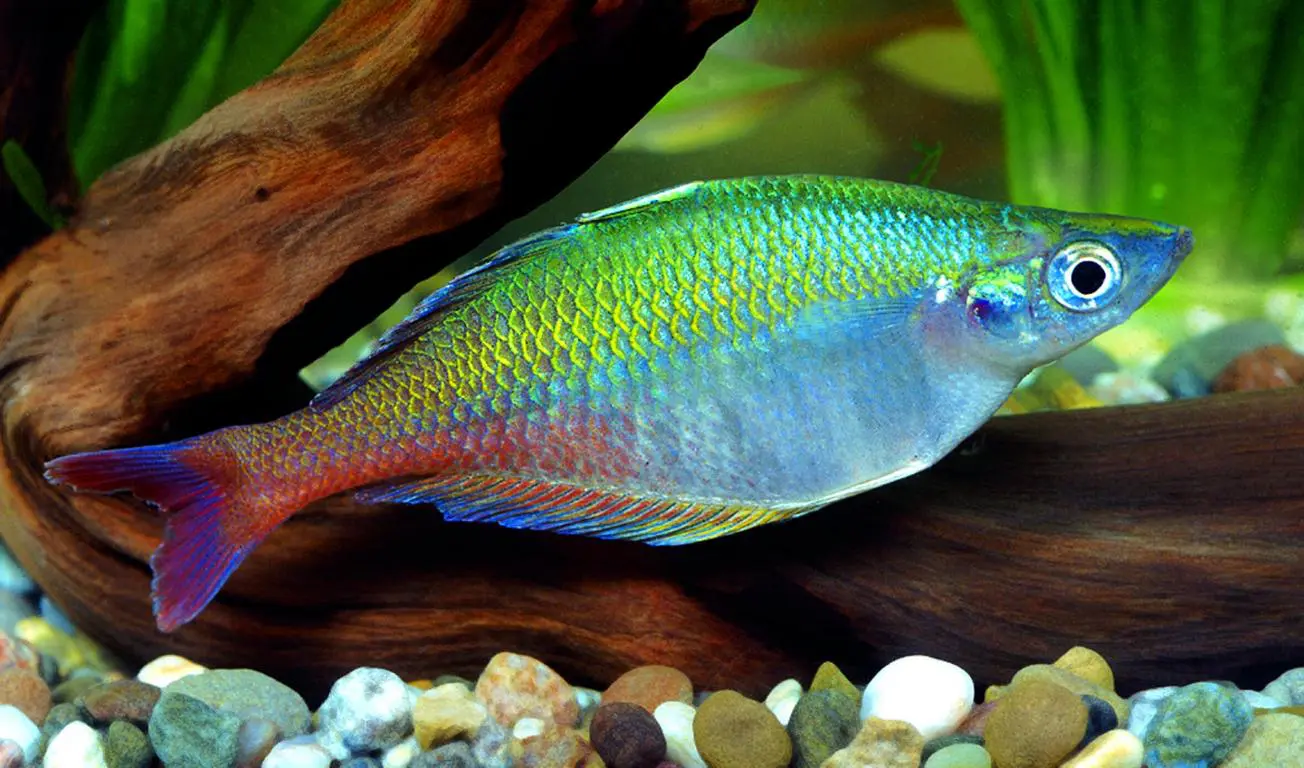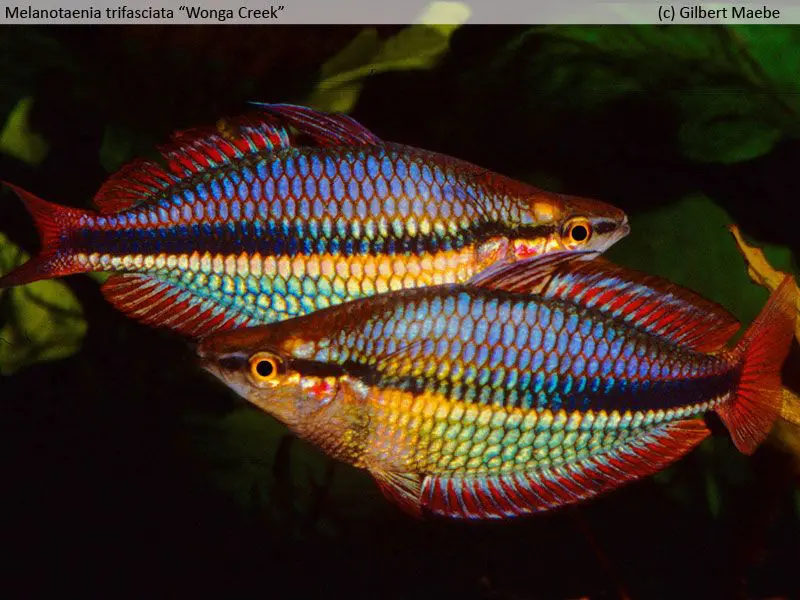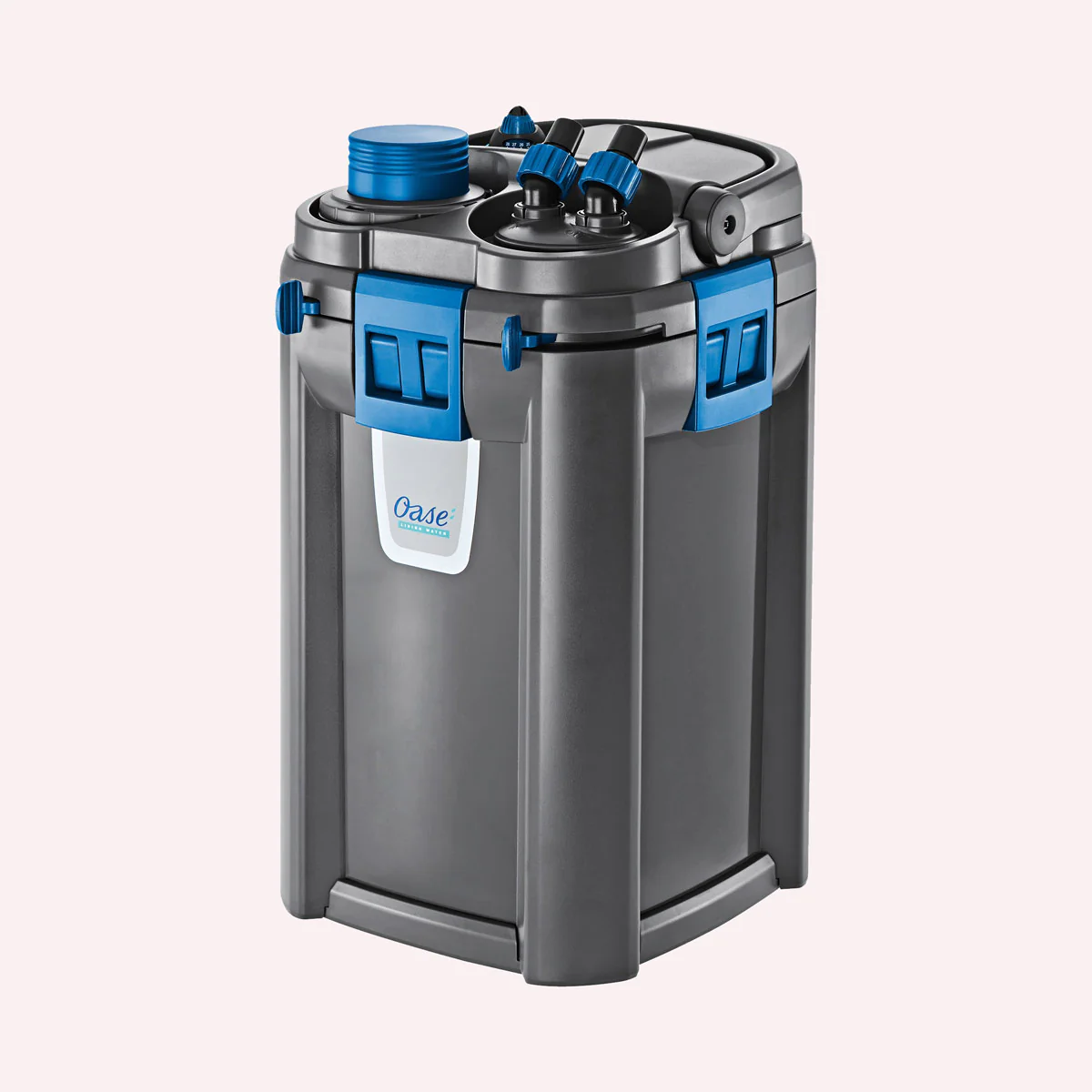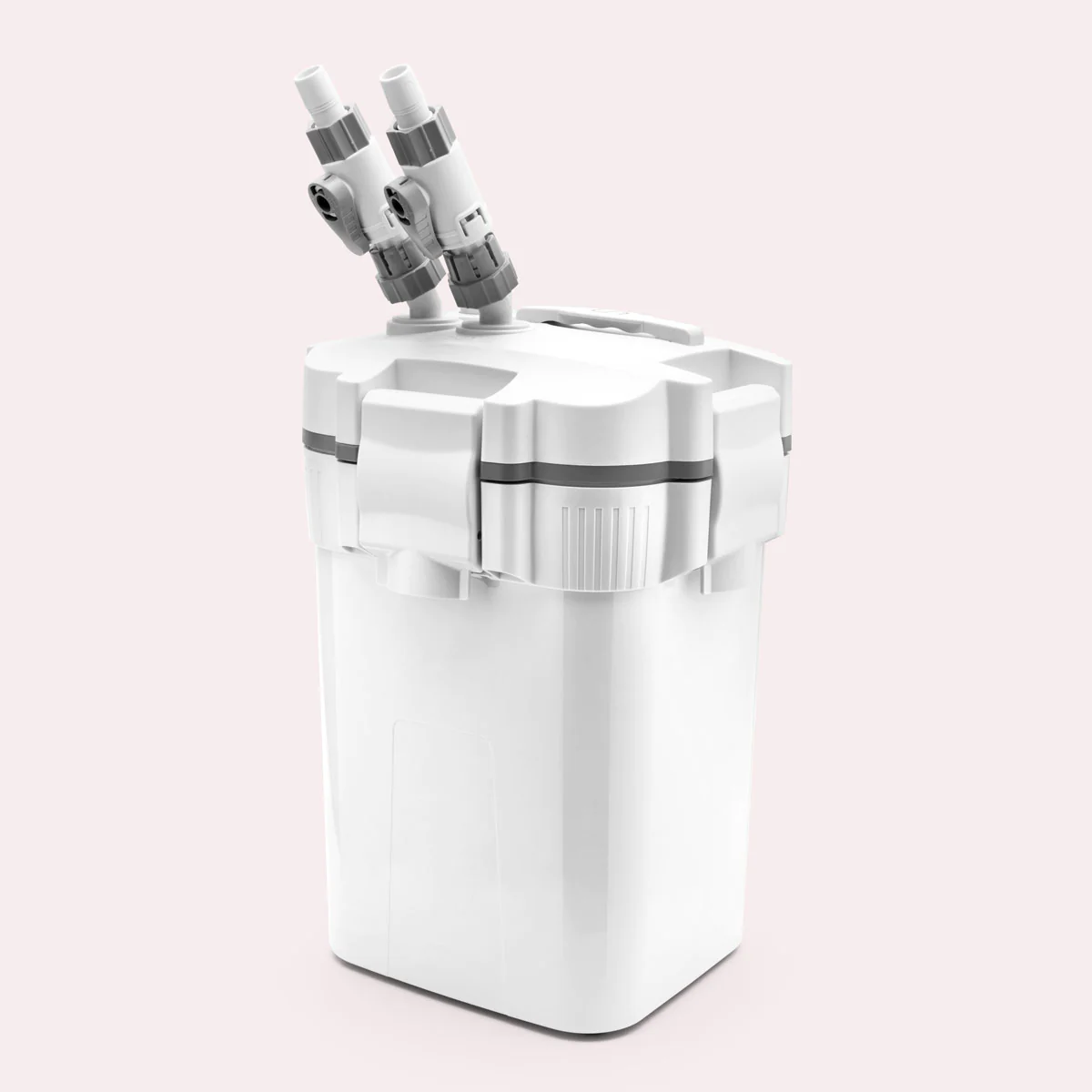Boesemani Rainbowfish Introduction
Looking for a fish that will bring vibrant colors and liveliness to your aquarium? Enter the Boesemani Rainbowfish! While these beautiful fish may already have some popularity among freshwater enthusiasts, we believe they deserve even more attention. They are not only visually stunning but also incredibly easy to care for, making them perfect for beginners. Plus, they coexist harmoniously with various community fish species and thrive in planted tank setups.
Here’s what you need to know:
Boesemani rainbowfish display a remarkable array of colors and can grow slightly larger than other freshwater community species. While they don’t have any specific requirements, Boesemanis thrive best in heavily planted tank setups. The lush greenery provides them with a sense of security and replicates their natural habitat.
One thing to note is that Boesemanis can sometimes outcompete other fish for food. So, it’s important to carefully choose their tank mates or adopt a specific feeding method to ensure everyone gets their fair share.
The good news is that these rainbowfish can be successfully bred in a home aquarium. This not only adds an exciting dimension to your hobby but also contributes to conservation efforts by reducing the impact on dwindling natural populations.
Let’s dive into the details of this fascinating fish species:
| Scientific Name | Melanotaenia boesemani |
| Common Names | Boesemani Rainbowfish, Boeseman’s Rainbowfish |
| Family | Melanotaeniidae |
| Origin | Indonesia |
| Diet | Omnivore |
| Care Level | Moderate |
| Activity | Moderate activity |
| Lifespan | 5 to 10 years |
| Temperament | Peaceful |
| Tank Level | Middle |
| Minimum Tank Size | 40 gallons |
| Temperature Range | 72 – 77° F |
| Water Hardness | 9 – 19 KH |
| pH Range | 7.0 – 8.0 |
| Filtration/Water Flow | Low to moderate |
| Water Type | Freshwater |
| Breeding | Egg Layer |
| Difficulty to Breed | Moderate |
| Compatibility | Community tanks |
| OK, for Planted Tanks? | Yes |
Intrigued by the Boesemani Rainbowfish? We thought you might be! Keep reading to discover everything you need to know about caring for these remarkable fish and creating a stunning aquarium that showcases their true beauty.
Origins and Natural Habitat of Rainbow freshwater fish
Are you ready to dive into the world of vibrant and captivating fish species? The Boesemani rainbowfish is a true gem found in the wild, boasting a stunning blend of blue and orange hues. These enchanting fish are native to the tri-lake region of Indonesia, known as Ajamaru, and can also be found in neighboring lakes such as Lake Hain and Lake Aitinjo.
In their natural habitat, the Boesemani rainbowfish prefers the shallow waters adorned with dense vegetation. They form schools and reproduce in these lush surroundings. Interestingly, these rainbowfish have shown adaptability to varying water conditions, including different levels of hardness and pH. This adaptability makes it easier to acclimate them to the preferred water parameters of aquarium fish.
Appearance that Mesmerizes
If you’re seeking a unique and visually appealing addition to your aquarium, rainbowfish won’t disappoint. With numerous species available, ranging from small to large with distinctive features, they bring a touch of extraordinary to your tank.
The Boesemani rainbowfish, in particular, steals the show with its remarkable colors. It’s simply unmatched! Displaying vibrant blues, yellows, oranges, and even hints of green, these fish are a true spectacle. The males exhibit a striking contrast of colors, transitioning from a deep blue at the front half of their bodies to a rich orange near their tail fins. Meanwhile, females boast a solid silver or yellowish-green color with lighter bellies, making them easily distinguishable from other species.
Fish Size Matters
The Boesemani rainbowfish falls into the moderate size category among rainbowfish species. Males tend to grow slightly larger, reaching a maximum length of about 5 inches, while females typically stay under 4 inches when fully grown.
Caring for Boesemani Rainbowfish
Providing proper care for Boesemani rainbowfish is relatively straightforward, but it’s important to consider a few key factors before bringing them into your tank. With the right setup, these fish can live happily for extended periods, bringing a burst of color to your aquatic haven.
Ease of Keeping Rainbow fresh water fish
When it comes to ease of care, Boesemani rainbowfish are hardy and adaptable, having been bred to thrive in various aquarium conditions. However, it’s worth noting that they are larger, active fish that can sometimes overwhelm other species in the tank.
To ensure their well-being, it’s crucial to keep them in sizable groups with an appropriate ratio of males to females. This not only enhances the expression of vibrant colors in males but also minimizes any potential conflicts between the sexes.
Freshwater Fish Tank Setup
Unlike popular tropical fish like tetras, Boesemani rainbows require some special attention when it comes to tank setup. To truly showcase their beauty, providing the right environment is essential.
An ideal aquarium for Boesemani rainbowfish should feature abundant vegetation at different levels. These fish predominantly swim in the middle region of the tank but are known to explore the top and bottom areas in search of food. To create a welcoming habitat, incorporate live plants that grow in the foreground, midground, and background. Alternatively, regular pruning of plants can create a layered effect, enhancing the overall aesthetics of the tank.
Now that you’re equipped with the essential knowledge, it’s time to embark on your journey of caring for the magnificent Boesemani rainbowfish. Get ready to witness a kaleidoscope of colors and bring a touch of natural beauty to your aquarium!
Tank Fish Size
Boesemani rainbowfish are considered moderately difficult to care for due to their relatively demanding tank size. These tropical fish are larger than average and require plenty of room to swim and school. However, you don’t need a massive setup for them either.

A minimum tank size of 40 gallons is recommended for Boesemani rainbowfish. Going smaller than this will limit the number of rainbows and other species that can be kept together. On the other hand, a larger aquarium increases the possibilities of housing other rainbows and species.
Keep in mind that in a heavily planted tank, a significant portion of the aquarium space will be occupied by plants and decorations.
Fish Tank Water Parameters
Boesemani rainbows are hardy fish that have been successfully bred in the aquarium industry. This means they can adapt to various water parameters and are more resilient against common freshwater diseases. Their immune systems have developed the ability to recognize and overcome pathogens faster and easier.

To ensure the well-being of Boesemani rainbowfish, maintain tropical water conditions with a constant temperature between 72°F and 77°F. While they are a tropical species, some hobbyists have reported greater success in slightly cooler water temperatures.
In terms of pH levels, aim for a neutral range of 7.0 to 8.0 in the aquarium. The water hardness should be between 9 and 19 KH, but these fish are highly adaptable to changes in hardness levels.
Filtration and Aeration
Although Boesemani rainbows aren’t intentionally messy, their size, activity, and voracious appetite can result in a high bioload. Having plants in the tank helps absorb nutrients and other waste, reducing the need for extensive maintenance. However, some care is still necessary.
It is highly recommended to use an adequately sized filter rated for at least twice the tank size. This ensures effective waste removal and proper water circulation. Boesemani rainbows are strong swimmers and can handle moderate water flow, but they also need areas with lower flow. Consider the preferences of the live plants you plan to keep, as some species prefer gentle water movement.
Additionally, additional aeration can be beneficial. You can achieve this by using a sponge filter and/or air stone. A large sponge filter like Oase Biomaster Thermo or multiple smaller ones can create minimal water movement while promoting gas exchange, which is crucial for plant health. Attaching an air stone to an air pump can also enhance gas exchange and provide aesthetic appeal. Ultum Nature Systems DELTA 120 Filter can be a candidate
Lighting
The lighting requirements for your tank depend on the types of plants you have. Boesemani rainbowfish may be skittish with sudden shadows and active species, but they generally tolerate higher lighting conditions as long as the aquarium has a secure lid. In other words, these rainbows won’t avoid swimming out in the open just because of bright lights.
Instead, adjust the amount of lighting based on the specific live plants you keep. If your fish seems uncomfortable or stressed and tends to hide in the shadows, consider adding more live plants, floating plants, or structures to provide additional areas of relief.
Aquarium Plants and Decorations
Aquarium plants are essential for Boesemani rainbowfish. These fish come from densely planted areas in their natural habitat, which provide them with food and shelter. Surprisingly, the more hiding places available, the more likely the fish will venture out into open areas.
Aquarium plants contribute to a healthy tank environment. They require nutrients for photosynthesis and growth, which are provided by the fish and invertebrates in the aquarium. As plants use these excess nutrients, they help clean the water, reducing the workload for the hobbyist. However, if sufficient nutrients aren’t naturally entering the system, additional fertilization may be necessary.
In addition to plants, you can add rocks, driftwood, and other aquarium-safe decorations to your rainbowfish tank. Ensure these objects are securely placed, as Boesemani rainbowfish can accidentally bump into them and knock them over when swimming at high speeds.
Tank Maintenance
Tank maintenance for rainbowfish kept in well-planted tanks is generally low. Some aquarium keepers even opt for unfiltered Boesemani tanks, allowing the live plants and fish to find a balance between nutrient input and output. However, this Walstad method is recommended only for highly experienced hobbyists.
Nevertheless, regular weekly or biweekly 10-25% water changes are still recommended. These water changes help remove waste that may accumulate around plant stems and introduce fresh, nutrient-rich water for the plants. If you’re using a pure water source like reverse osmosis water, you’ll need to manually add minerals back into the tank.
If you dose fertilizers, it’s advisable to regularly test the water using a reliable water testing kit to monitor nutrient levels in the system.
Substrate
Boesemani rainbowfish can be kept on any substrate. While a dark substrate can enhance their coloration, it is not necessary to make these fish stand out.
When choosing a substrate, prioritize the needs of the plants. Many hobbyists use plant-specific substrates that facilitate healthy root growth. Another suitable option is aquarium-purpose river sand, which comes in various color grades.
Community Tank Mates
Boesemani rainbowfish are generally peaceful and can coexist with various species in a community tank. Consider matching preferred water temperatures and activity levels when selecting suitable tank mates.
Yes, Boesemani rainbowfish thrive in community tank setups. They are often the centerpiece of the tank, with other fish complementing their vibrant colors and lively movements.
Some of the best tank mates for Boesemani rainbowfish include larger tetras, larger rasboras, Corydoras catfish, barbs, and other rainbowfish. Due to their preference for harder water, some hobbyists have successfully kept them with peaceful species of African rift lake cichlids. However, avoid smaller, slow-moving fish that could easily be overwhelmed and outcompeted.
Boesemani rainbowfish are schooling fish and enjoy the company of their own kind. To avoid harassment, it’s recommended to keep 2 to 3 females for every male fish. Ideally, a minimum of 6 rainbowfish should be kept together at any given time.
Living with Angelfish
Boesemani rainbowfish can live with angelfish under specific conditions. Angelfish are slow-moving fish but can defend themselves due to their cichlid nature. This combination can work if the angelfish are larger and more aggressive than the rainbowfish. Otherwise, the Boesemanis may be too overwhelming and outcompete the angelfish.
Food and Diet
Boesemani rainbowfish are voracious eaters and readily accept a variety of foods. To keep costs down while enhancing their colors and satisfying their appetite, offer them small portions of high-quality flake food a couple of times a day.
As a treat, you can supplement their diet with freeze-dried, live, and frozen foods like blood worms. They particularly enjoy brine shrimp, bloodworms, tubifex worms, and mosquito larvae. Being omnivorous, they also eat green vegetables such as spinach and cucumber. Regular feedings of protein-rich foods, while not excessive, can potentially lead to water quality issues.
Although Boesemani rainbows may appear to have large mouths, their throats are actually small, which can limit the size of food they can consume. Ensure you provide appropriately sized live foods, and if necessary, cut up any pieces that seem too big.
To prevent other fish from missing out on food and becoming stressed due to the Boesemani’s quick eating, you can try feeding the rainbowfish sinking foods while offering floating foods to the other fish. This will keep all the fish engaged in eating at different levels of the tank.
Breeding Boesemani Rainbows
Breeding Boesemani rainbowfish is relatively easy in a home aquarium setting, although it’s recommended to use a dedicated breeding tank for better control over conditions. Raising their fry can be somewhat challenging, and a breeding tank provides the most favorable environment.
To initiate breeding, introduce a group of females with one to two males. Provide a high-quality and consistent diet while gradually raising the water temperature to around 80 – 84°F and maintaining a slightly basic pH of 7.5. When ready, females will become plump, and males will display intensified colors.
As egg scatterers, female Boesemanis will freely release their eggs, which the males will then fertilize. You can use fine-leaved plants like Java moss or egg crate to catch the eggs. Once the eggs have been fertilized, it’s essential to remove the adult fish from the breeding tank to prevent them from consuming the eggs.
After about a week, the fry will hatch and require small foods such as infusoria until they grow large enough to accept larger foods like baby brine shrimp. After a few months, they can either be given to another hobbyist or reintroduced to the display tank.
Conclusion
Boesemani rainbowfish are excellent choices for aquarium hobbyists seeking something new and vibrant. These fish are as easy to care for as tetras and rasboras but bring fresh colors and shapes to a community fish tank setup. When selecting tank mates, consider their activity levels and ensure compatibility with their preferred water temperatures. While Boesemani rainbowfish are active and ambitious eaters, they are not aggressive. They also offer a rewarding breeding experience for beginner hobbyists looking to take on a new challenge!




